Inspired by Greek tzatziki, this cucumber yogurt sauce is a versatile condiment, dressing, and dip you’ll want to add to everything! It’s made with thick Greek yogurt, grated cucumbers, and fresh mint and dill that provide fresh, herbaceous flavor. Scoop it up with warm pita pieces, serve it alongside fresh veggies for dipping, or dollop it onto salmon, meat, gyros, or roasted vegetables (like these baby eggplants)!
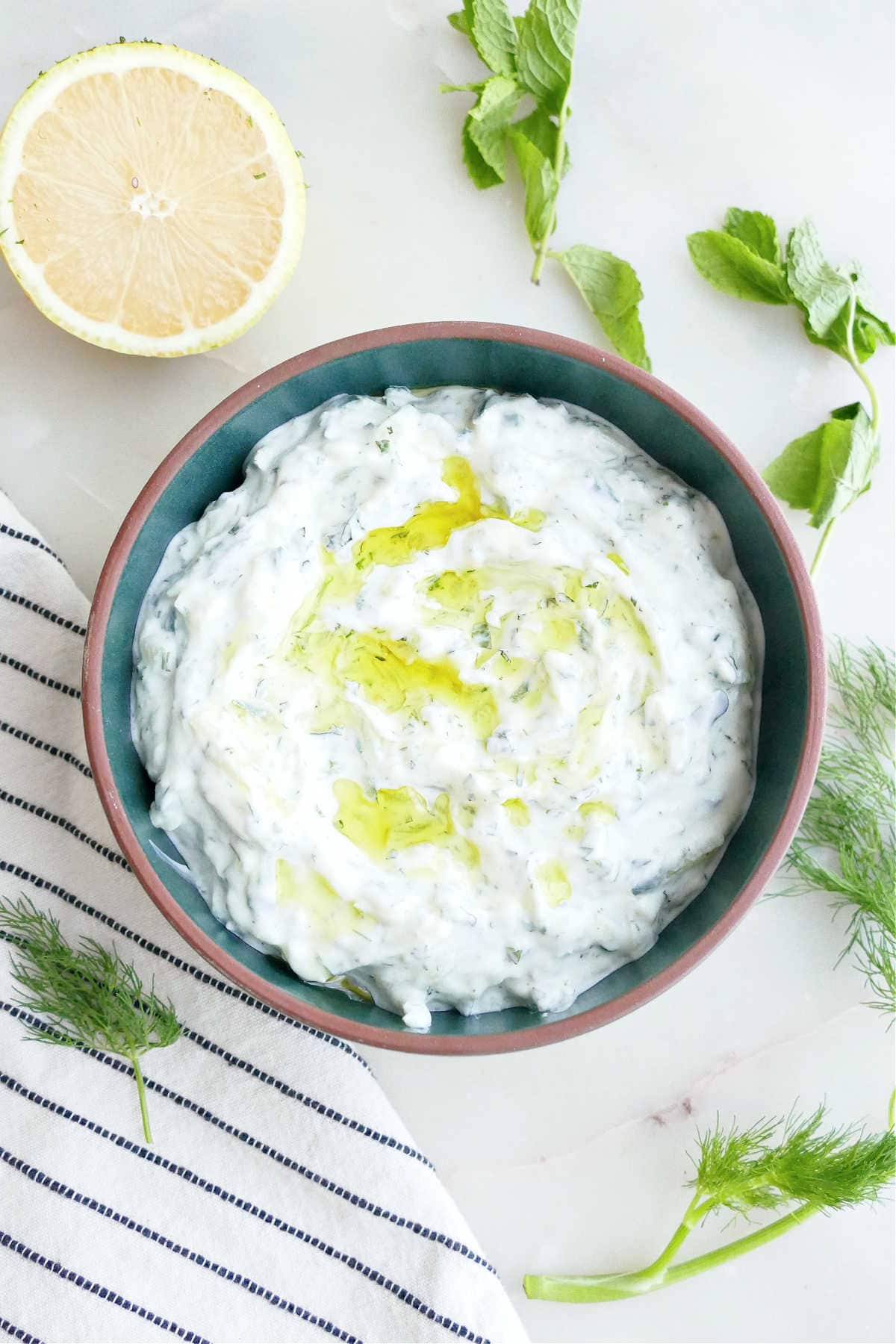
Jump to:
Lizzie’s Notes
We don’t do boring vegetables in the Veg World. Instead, I’m all about turning veggies into something you’ll crave—full of flavor and with a variety of textures. One of my favorite ways to do this is via condiments!
Cucumber yogurt sauce is one of those condiments/sauces/dips I’ve made a hundred of times with a hundred slight variations. I love whipping it up to serve on a family-style spread of roasted peppers and onions, chicken strips, pickled red onions, feta cheese, and pita pockets. You can also find me smothering it on salmon cakes or serving it as a fun veggie-dunking option for my girls. It’s just such an easy way to eat more plants!
I’ve finally put together my favorite version to share with all of you. It’s a wonderful recipe for late summer when cucumbers are nearing the end of their season and herbs are at their peak, but you can certainly make it all year round! Enjoy.
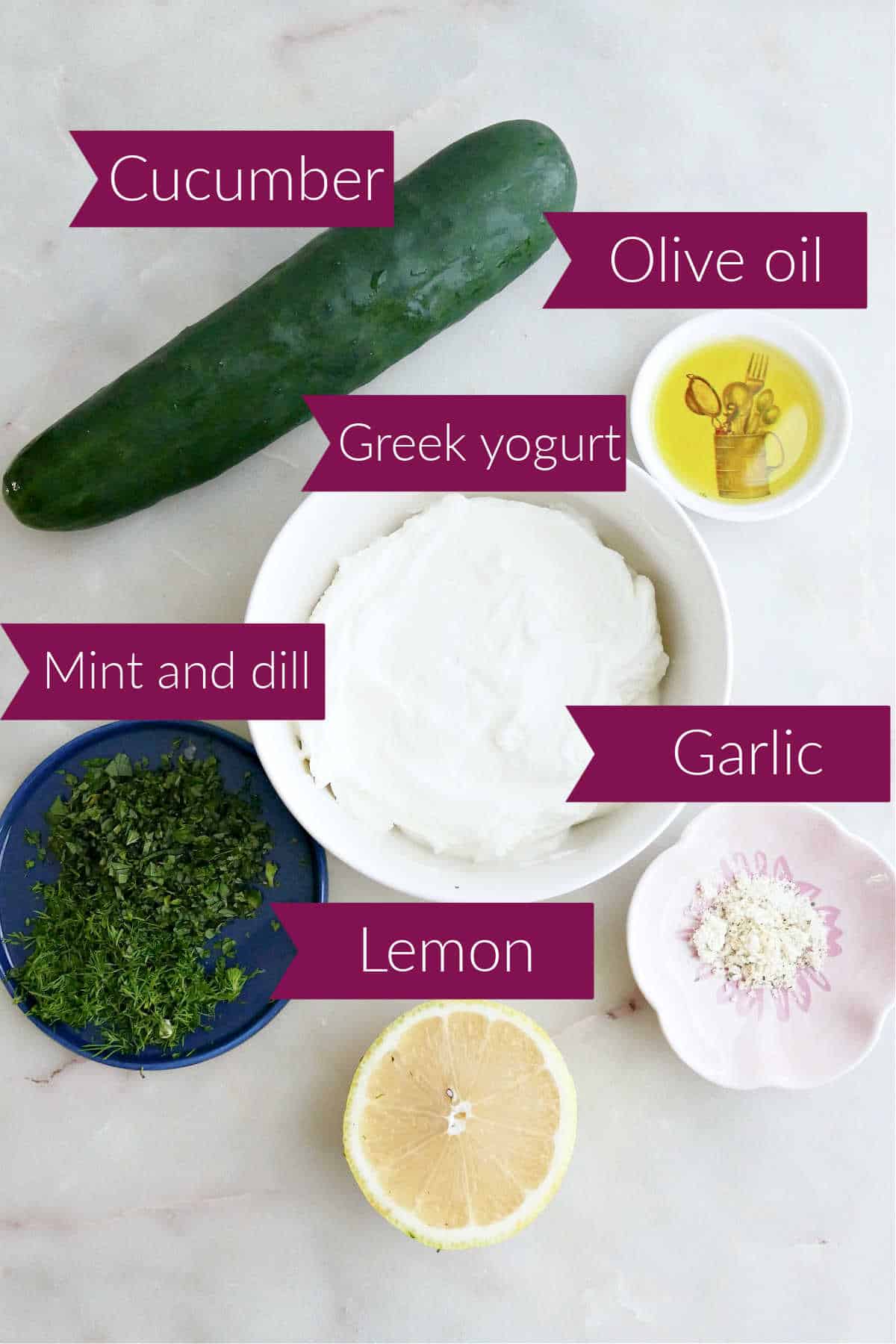
Ingredients and Substitutions
- Cucumber: You can use any kind of cucumber for this recipe. I typically prefer Persian or English cucumbers, since they tend to have fewer seeds than garden cucumbers. If you use a garden cucumber, you may want to peel it since the skin is tougher and may even be waxed if you bought it from the grocery store. I prefer to make cucumber yogurt sauce with grated cucumber (more on that later), and garden cukes tend to be a little more difficult to grate. Consider de-seeding them and dicing into tiny pieces instead if that’s the variety you have.
- Greek yogurt: The thicker, the better. As I mentioned, I’ve made so many variations of this recipe using whatever yogurt I had on hand. I’ve tried Icelandic skyr, Chobani Greek yogurt, and many others, and the winner is Fage 5% Greek yogurt. It’s got the perfect consistency for a sauce or dip!
- Lemon juice: If you don’t have a lemon, substitute white wine vinegar or even apple cider vinegar.
- Extra virgin olive oil: I love Partanna and Madhava brands.
- Mint and dill: Some variations of this sauce just call for dill, but I think adding mint is a game-changer! I highly recommend using fresh herbs, but you can substitute ½ to 1 teaspoon of dried mint and dill if that’s what you have.
- Garlic salt (or garlic): Ok, hear me out. As someone from an Italian family who fully respects fresh garlic, I actually prefer cucumber yogurt sauce with garlic salt or garlic powder instead. I find that fresh garlic is too strong, especially if you are serving the sauce right away, and overpowers the other flavors. That’s my preference. Do with it what you want!
Instructions
The full recipe card is at the bottom of the post. Here’s a preview of the (very easy!!) steps.
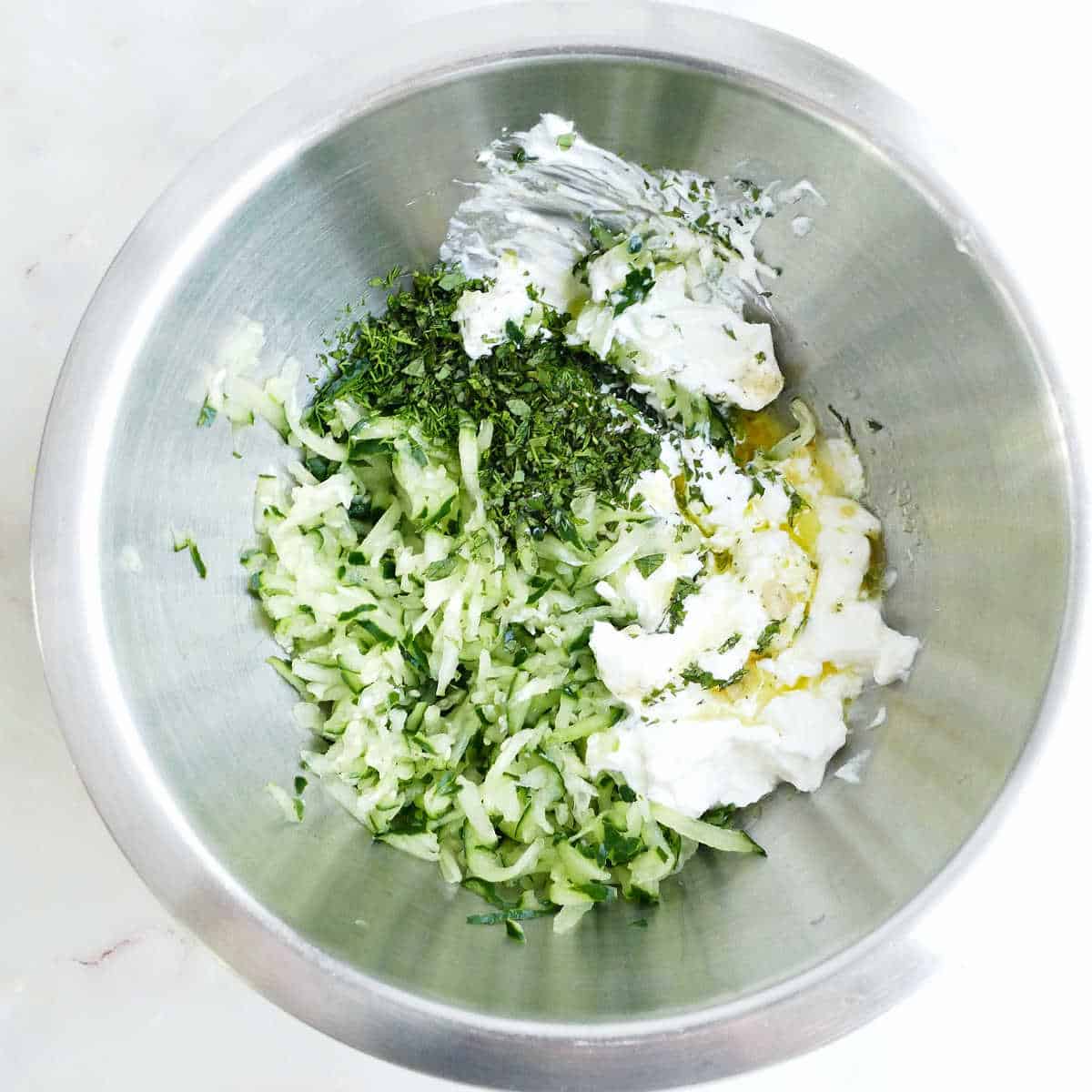
Grate the cucumber using the largest holes on a box grater. Squeeze out the water by just squeezing the cucumber between your hands over the sink or by putting it in a dish or paper towel and wringing it out. Combine the cucumber with the other ingredients in a bowl.
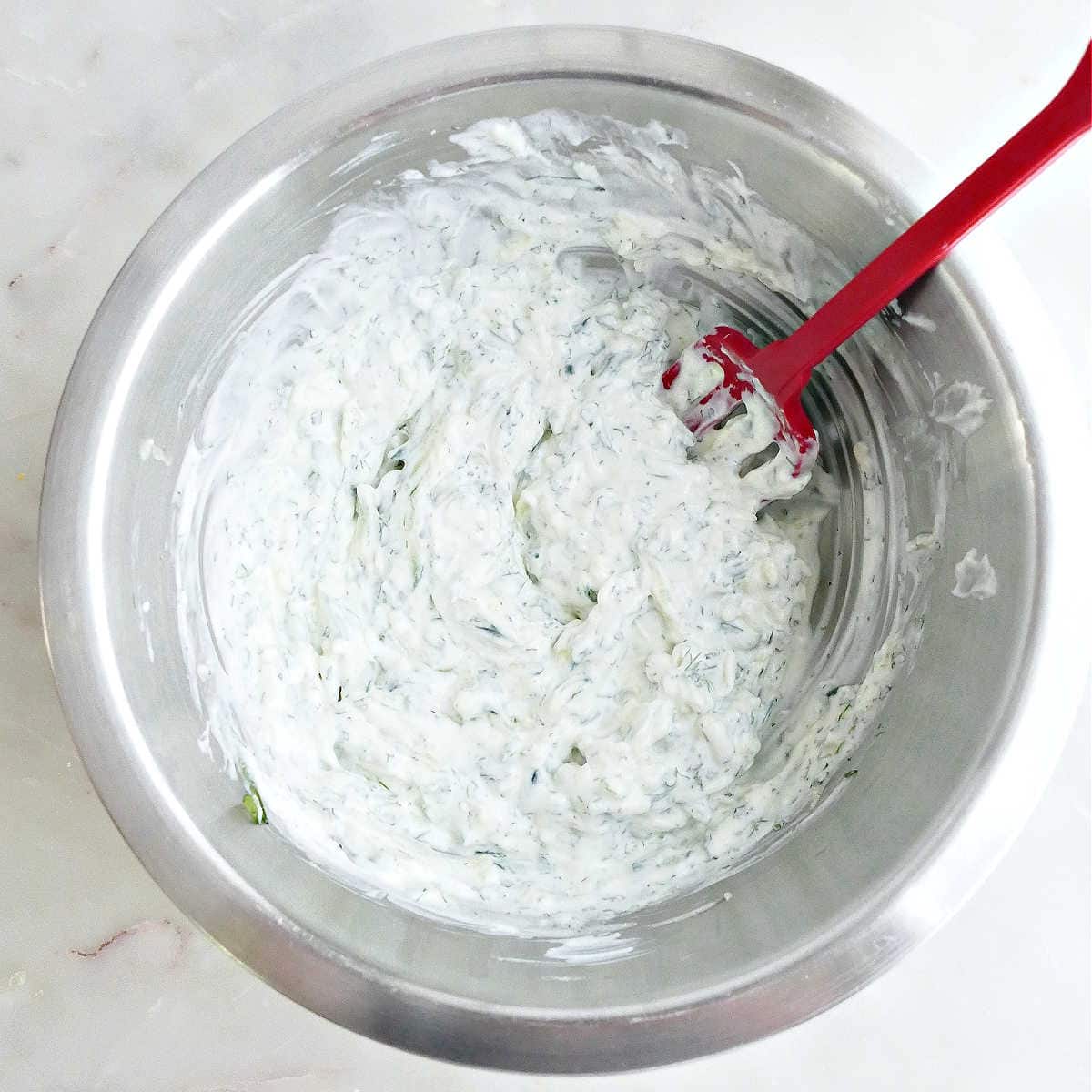
Mix everything together. Taste and adjust seasonings.
Serving
Here are some delicious ways to use cucumber yogurt sauce:
- On gyros, including my eggplant “gyros”
- As a dip for carrot sticks, tomatoes, other fresh veggies, crackers, and pita chips or warm pita triangles
- On falafel
- Spread onto sandwiches, burgers, or wraps, like my halloumi wraps
- On roasted vegetables (try the baby eggplants!)
- In salads and grain bowls
- On salmon cakes
- On grilled meat and veggie skewers
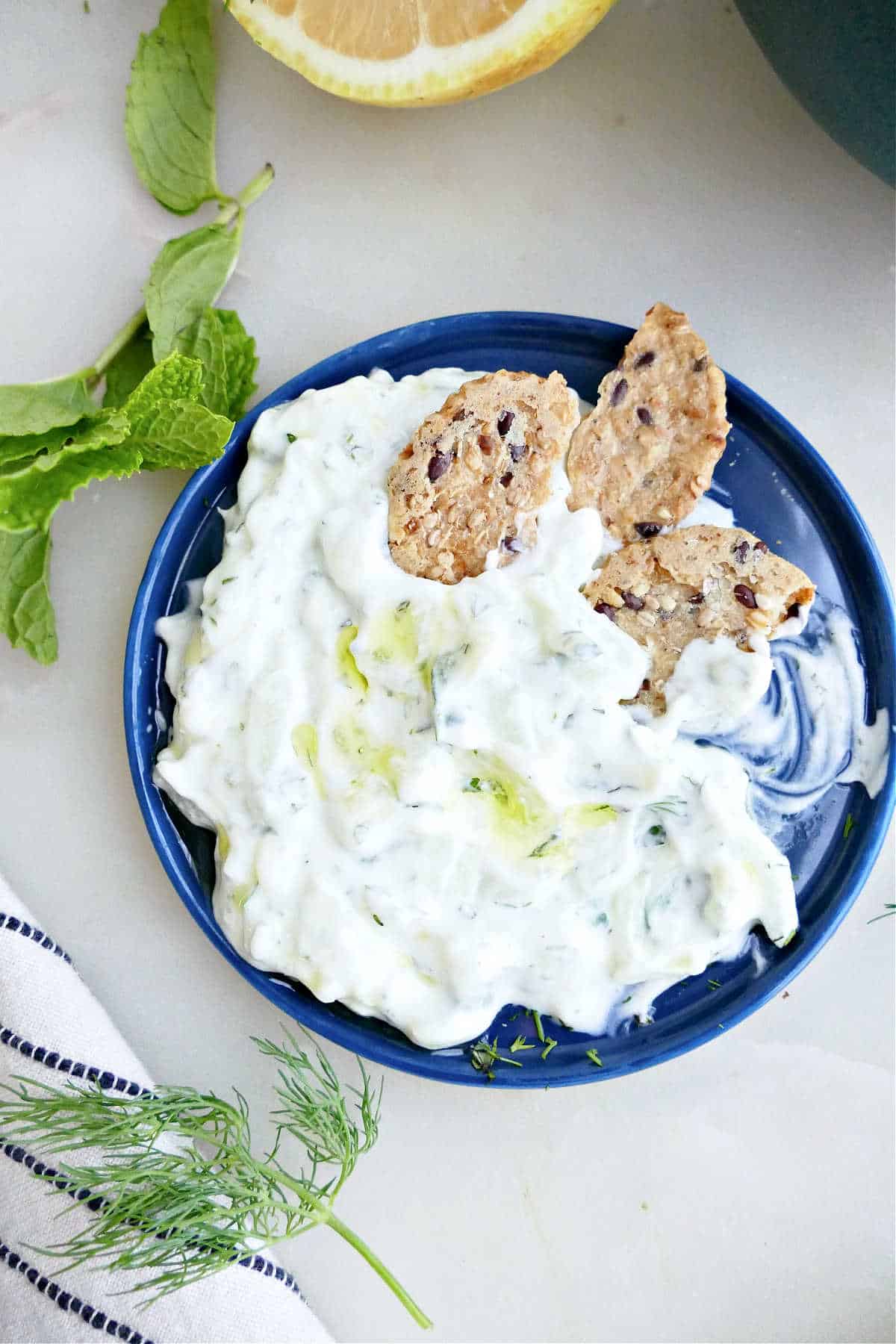
Storage
Cucumber yogurt sauce will keep in an airtight container in the refrigerator for up to 2 to 4 days. Since cucumbers have a very high water content, the sauce may get a little watery and even separate. That’s why it’s important to squeeze as much water out of the cucumbers as you can before mixing them with the yogurt.
More Healthy Sauces
Love this lemony, garlicky, and herby cucumber yogurt mint sauce?! Try these other sauces/dips/condiments while you’re here!
📖 Recipe
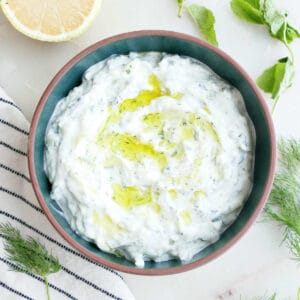
Cucumber Yogurt Sauce with Mint and Dill
Equipment
Ingredients
- 2 cups grated cucumber - from about 1 medium cucumber, see step 1 for tips
- 1.5 cups whole milk Greek yogurt - see notes for recommendations
- 2 tablespoons chopped fresh mint
- 2 tablespoons chopped fresh dill
- 1 tablespoon extra virgin olive oil
- 1 tablespoon lemon juice
- 1 teaspoon garlic salt
- ¼ to ½ teaspoon salt
Instructions
- Prepare the cucumber. If using a Persian or English/hot house cucumber, grate it on the largest holes of a box grater. These cucumbers have fewer seeds and tend to be easy to grate.If using a garden cucumber, peel it first since the skin is tougher and may even be waxed. Since garden cucumbers have more seeds, you may want to remove the seeds and dice it into very small pieces instead of grating it.
- Squeeze water out of the cucumber. You can do this by squeezing the grated cucumber between your hands over the sink and then blotting it dry with a paper towel. Or, wrap it in a clean dish towel or paper towel and wring it out as much as you can over the sink. The latter method is the most effective. Removing water from the cucumber will prevent the sauce from separating and losing flavor.
- Combine the prepared cucumber, Greek yogurt, mint, dill, olive oil, lemon juice, garlic salt, and salt in a mixing bowl. Stir until combined.
- Taste and adjust seasonings as desired. You can also thin the sauce by adding a few drops of water until it has reached the consistency you want.
- Leave a rating or review by tapping the stars on this recipe card (above) or in the comments section (at the end of the post)!
Notes
- I have tried this recipe with so many different styles of yogurt and think Fage 5% Greek yogurt is the best option!
- Keep leftovers in an airtight container in the refrigerator for up to 2 to 4 days.
- Serve as a dip for veggies, pita, or crackers or on top of sandwiches, burgers, meats and fish, and roasted vegetables.

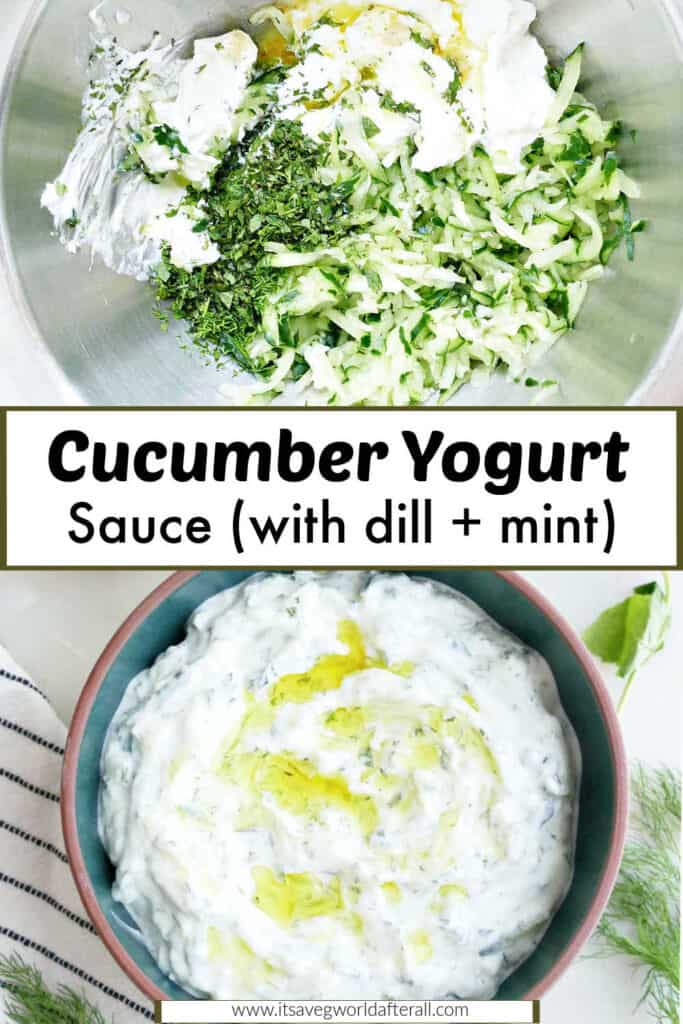
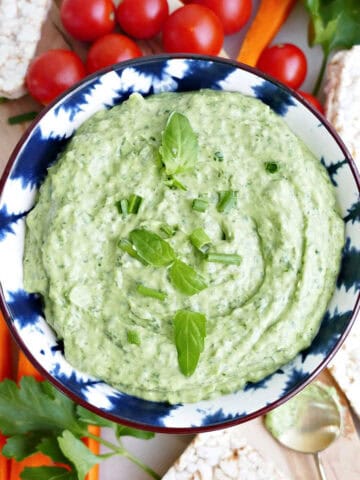
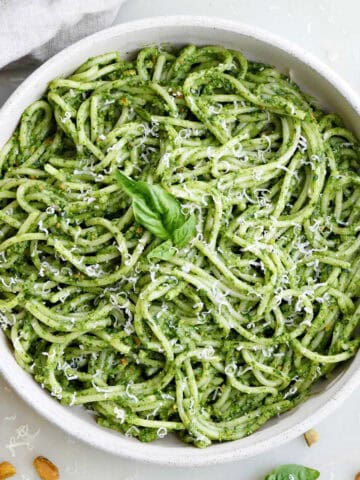
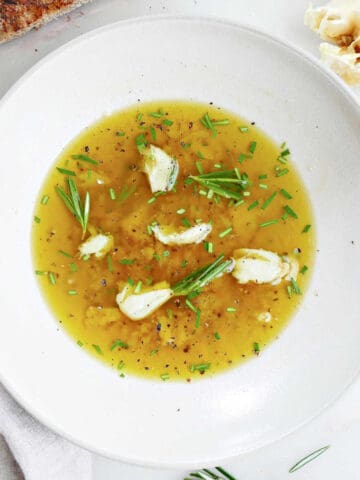
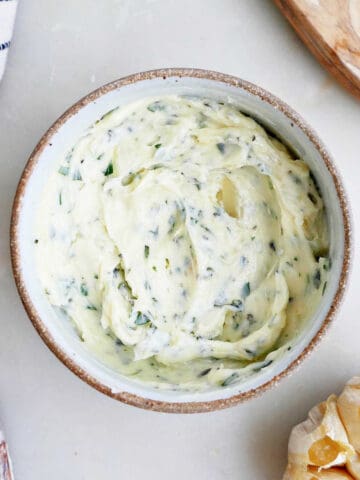
Comments
No Comments